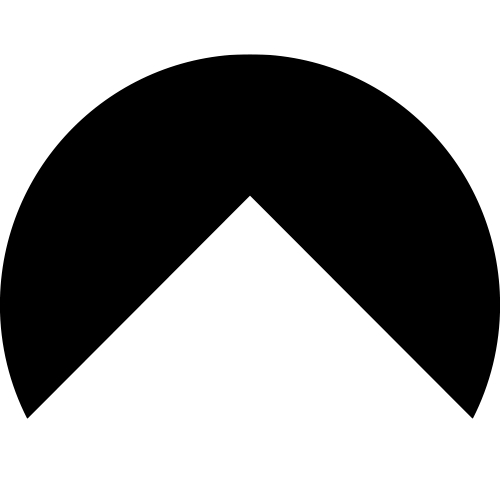The world needs energy-efficient solutions
On a sunny day in the summer, the sun shines with a light output of 1000 W per. m2. That a lot of energy – especially for a renewable energy source.
Important processes on the Earth’s surface are powered by solar energy, such as biological and climatic processes. The sun is popularly said to be the engine of the Earth, and the Sun’s heating creates thermal differences, which drive the earth’s wind systems and thus a climate that is comfortable to live in, as well as wind to wind turbines and waves in the sea to wave energy.
With very few exceptions, it is the Sun’s electromagnetic energy, which is absorbed in the first link in the food chains by photosynthesis and stored as chemical energy in plants, algae, plankton, etc., which ultimately ensures that humans and animals can get food to eat.
Of the Sun’s rays, 30% are reflected back into space. This means that 70% gets through to the Earth’s surface, and that is enough for the Earth to receive more energy from the Sun in just one hour than the total global energy consumption in a whole year.
To utilize this solar energy, it must first be converted into something that can be utilized, such as thermal energy, also called solar heat, or electrical energy by solar cells.
To highlight the amount of energy from the sun, the annual supply of energy from the Sun is equivalent to storing more than 100 liters of oil on every single m2 in Denmark, but unlike fossil fuels, Solar Energy is renewable, sustainable and clean and it is found everywhere.
Solar energy is a CO2-neutral form of energy and actively contributes to reducing greenhouse gas emissions.
Solar energy is a CO2-neutral form of energy and actively contributes to reducing greenhouse gas emissions.
Benefits of the Sun as an energy source

- Solar energy is an unlimited resource
- Solar energy can compete with fossil energy sources
- Solar energy contributes to a higher degree of self-sufficiency
- Solar energy ensures a fixed energy price
- Solar energy is a CO2-neutral form of energy and actively contributes to reducing greenhouse gas emissions
- Solar energy has no odor and noise nuisance
Solar cell technology
Most people have probably become acquainted with solar cells in the calculator you use at school which has no batteries to be replaced, which turn on as long as you keep it under light, or when you see pictures of the satellites orbiting the Earth, which are kept by the large solar cell “wings” that ensure that the satellite can continue to send signals down to the surface.
Solar cells convert the sun’s energy into electrical energy in a reliable and noise-free way that does not pollute.
Solar cells convert solar energy into electrical energy in a reliable and noise-free way that does not pollute.
Solar cells
As indicated above, a solar cell is a device that can convert light into electricity. This process takes place by light, or more precisely photons, containing a certain amount of energy and the material the solar cell is made of, has the special property that the photon’s energy can release electrons in the atomic lattice that makes up the material. This loose electron is then led away and replaced by another electron from the other end of the circuit, only to be struck loose again by a new photon and replaced by a new electron.
One now has an electric current driven by electrons that are constantly being unleashed by photons and replaced by new electrons. There are many different materials, more or less suitable as solar cells and these are used as needed, such as the amorphous silicon solar cells in the calculator, or the Gallium-based solar cells in the satellites.
The all-dominant solar cell technology used worldwide is with crystalline silicon as the basic material for the solar cells. Silicon is an element that is the second most abundant in the earth’s crust and the cells made of silicon are less than 0.2 mm thick. These are laminated on the back of a piece of tempered glass and you now have an extremely durable product that can be set up anywhere the sun shines and produces energy.
Solar cells in Denmark
Despite Denmark’s location high to the north, solar cells are a good investment both for the individual and for society. The solar cells will typically within 3-5 years have repaid the extra price from a passive roof, but already from the first electricity bill after connection, you will experience a permanent reduction in the household’s current expenses. For society, solar cells placed with the consumer, whether in the family or in business, are a great advantage.
By producing electricity locally at the consumer, the community can use existing infrastructure, as the cable goes from the solar cells and directly to the consumption in the building and you avoid the enormous costs of laying high voltage lines across the country, as well as the environmental costs of placing large solar farms on land. which could either be used for agriculture or nature restoration. At present, neighbors are paid to accept the large solar cell farms and the inconvenience this may cause, but Solartag believes and has the mission to put the solar cells where they belong; on the roofs of consumers around Denmark.
Storage is a way to increase the share of its consumption covered by solar energy, by saving the kilowatt-hours from the day’s production that were in surplus and using them after the solar cells have stopped producing after dark. As a society and consumers, we are facing an enormous electrification, where everything that was previously powered by fossil fuels must predominantly be replaced by electrically powered counterparts.
This means that the consumer must expect a much higher electricity consumption, for example for electric cars and heat pumps powered by electricity and it therefore becomes attractive to store its own production to the greatest possible extent, so that the current costs for electricity are kept low despite a growing Spending.
For this purpose, batteries are the most widespread, as they do not take up too much space and are a known and already used technology that will only see further development, with rapidly growing global demand. It is recommended to future proof your investment in solar cells, so that both production and storage capacity follow the requirements and adjustments of the future.
Get your own solarroof from Solartag
We want everyone to have the opportunity to get a Solartag, and therefore we are competitive on both price and installation of Solartag.
Our Solar roof differs significantly from all other roof types. Note that a Solar roof – unlike all other types of roof such as brick, slate, cardboard etc. – creates value from the moment it is installed, rather than losing value over a number of years until it needs to be replaced again. In other words, a Solar roof pays for itself and you can easily calculate a positive interest rate on your Solar roof investment: The household’s annual electricity savings / the additional cost of the Solar roof in terms of conventional roof x 100%
Contact us for a non-binding chat about how you can also get an active, sustainable and future-proof roof solution.


